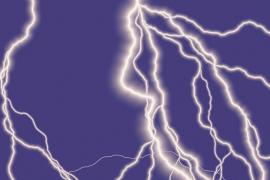Camp administration can influence the behavior of its staff, but it cannot control it. One of the most problematic emotions to occur in the camp setting is anger — an emotion that affects people in a multitude of ways. An impulsive action by a staff member can result in an injury to another person and even possibly damage the reputation of your camp.
Of course not all camp staff have problems with anger, but many young adults do (and this age group usually comprises the majority of camp staff). Screening staff prior to camp may not detect a difficulty controlling anger; a staff member’s problem with anger might not surface until after camp is in session. A thorough understanding of the emotion can therefore assist in dealing with anger-related problems that may arise.
The Psychology of Anger
Anger has been identified as a secondary emotion. We assume that anger is an immediate response to a specific situation, which is identified as a trigger.
However, anger is often secondary; it is a reaction to a more immediate primary emotion. Usually this first immediate emotional reaction to a trigger situation is an unpleasant one and difficult for an individual to deal with.
An example will help to clarify this important distinction: A junior counselor is overheard screaming at the campers in his bunk area. His supervisor later informs him that this is not an appropriate disciplinary strategy at camp. The counselor quietly agrees, and he apologizes for his loss of temper. Later that same day he can be seen with his fellow counselors cursing out his supervisor and complaining that the camp administrative staff has no idea how to deal with very difficult campers.
What was the immediate emotional response of this counselor on being reprimanded? You can assume that embarrassment, fear over losing his job, and possibly guilt were all present. These particular emotions are often very difficult to cope with and can be swiftly transformed into the secondary emotion of anger.
Anger is much more empowering. Physical stamina is increased as the sympathetic nervous system initiates a cascade of biochemical changes within the body. An angry person often experiences a mental clarity in addition to a feeling of increased strength. The more uncomfortable emotions of embarrassment, shame, and guilt are superseded by the commanding emotion of anger. In brief, anger creates a feeling of power as compared to these other states.
Curbing automatic thoughts
Not only is anger a result of an uncomfortable primary emotion, it is also the result of the thinking that occurs immediately following a trigger. These immediate thoughts are referred to as automatic thoughts. Thoughts are powerful modifiers of experience; they result in an interpretation of the trigger situation and affect the final behavior. To illustrate this, picture two counselors who are coping with a child having a temper tantrum. Both are witnessing the same event, but they are having very different thoughts regarding the incident.
- Counselor one: "This is the third time this week he did this. I wonder if there’s something
in his history to explain this? Maybe he’s been abused. Maybe he just doesn’t know how to express his needs."- Counselor two: "This is the third time this week he did this! He’s too old for this. I’m really sick of this. I didn’t plan on spending my summer looking after some brat!"
Which counselor will probably begin to feel frustrated with his inability to cope with the child’s behavior? Counselor two is well on his way to a state of frustration and anger. Maybe he will conclude this tantrum by losing his own temper and directing it at either the child or the camp administration.
Improvements in some of the most difficult mental disorders have been obtained by teaching people to recognize and refute their immediate thoughts. A camp counselor who can evaluate his automatic thoughts after a trigger stands a far better chance of maintaining his emotional balance.
Anger Isn't Bad
While the safe entertainment and education of campers are the two major concerns of camp, the further development and increased maturity of staff members are also desirable factors. A more mature staff member has enhanced capabilities in his interactions with campers and other staff. You can augment this development through teaching anger-management skills. You will never be able to stop anger at your camp, nor is it desirable to forbid it. Anger is not a bad emotion. It is often the angry staff member who points out the errors and bad judgements of the administrative staff. Anger can actually be a productive emotion — one which elicits needed change for the benefit of all. Anger then is not the problem; it is rather the overt and often inappropriate expression of it that causes difficulties.
An Anger Agenda for Camp
There are three immediate steps that your camp can take to minimize the effects of unrestrained anger.
Create a written policy
Your staff manual can present a written policy regarding overt displays of anger. The expression of anger should be allowed and even approved in camp, but only if it follows specified guidelines. You can provide several suggestions such as peer mediation, contacting supervisory staff, and creating a cooling down area located away from the major activity hub(s) in camp.
Teach anger reduction skills
Numerous resources are available for this topic. Every staff member could benefit from learning one or two techniques that lessen the intense sensations associated with anger. Decreasing anger is necessary prior to problem solving. Any activity that calms the physical arousal associated with anger also reduces the anger itself. One of the most common (and easy to teach) is proper breathing. Slow, calm breathing reduces the intensity of the experience or emotion.
Resolve conflict
Carol Tavris, in her book Anger: The Misunderstood Emotion, formulated several rules which can help in conflict resolution:
- Anger must be directed at the target of anger. A counselor who is angry with his supervisor will receive no benefit by denigrating this person to his fellow counselors. The supervisor needs to be confronted.
- The expression of anger must result in a behavior change in the target, or the angry individual must gain some new insight into the problem (i.e., the angry person realizes that he has misinterpreted the behavior of the target).
- The same anger language must occur. A person who prefers calm conversation will not deal well with a screamer just as a screamer will not deal well with the calm person. A supervisor or administrator can mediate the conflict and keep the dialogue at the same volume level.
- There must be no retaliation from the target.
These guidelines are not easily implemented in any institution, yet using them can help you constructively manage the anger that is certain to appear at some point in the season. Through the combination of policy, education, modeling (by camp administration), and dialogue, the negative events stemming from anger can be minimized. Anger may be a direct message that a problem exists within the confines of the camp community. Only by working through it will all parties affected find the satisfaction necessary for full involvement in the complexity of camp life.
Originally published in the 1999 July/August issue of Camping Magazine.


